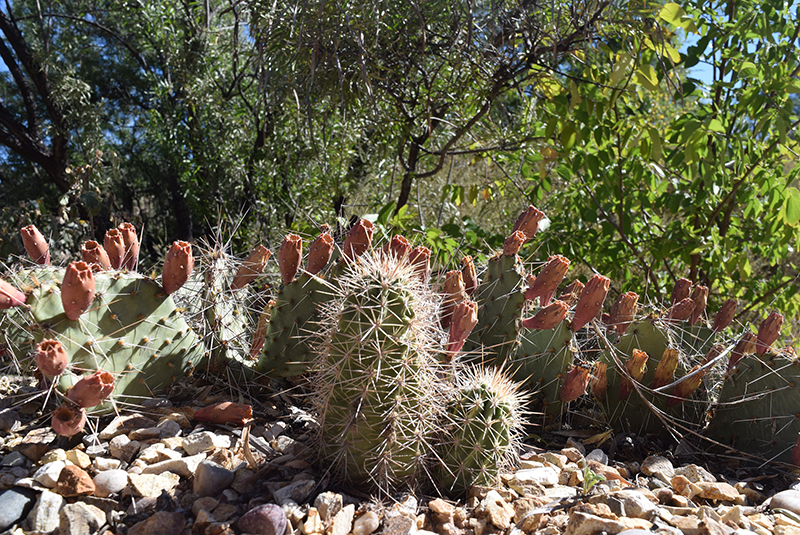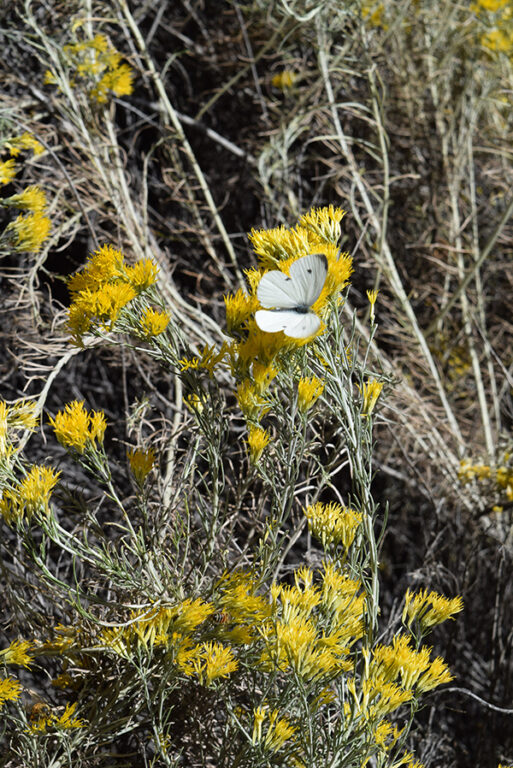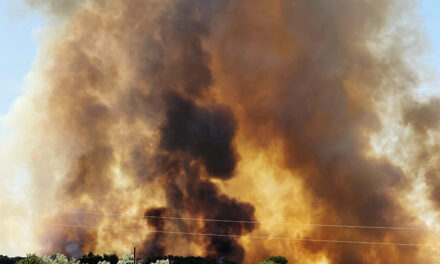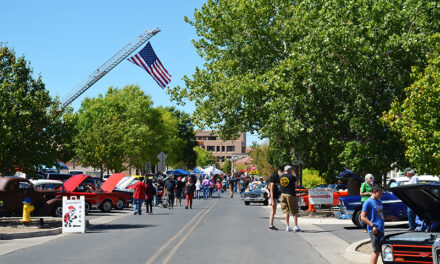While the phrase “water is life” has been around for centuries in various forms, it has seen a rebirth in recent years associated with battles over water usage.
With a dwindling supply, a new mantra may soon join it: “water is gold.”
The value of water is certainly rising, and that’s why various factions, from environmental to governmental, agricultural to occupational, encourage homeowners to save water and save money.
“Water is going to become gold here pretty soon,” is how Kris Hessinger of Hessinger’s Plumbing, Heating and Cooling of Belen puts it. Hessinger often sees water going down the drain, and your money with it.
After the city of Belen and village of Los Lunas began using more accurate water meters several years ago, Hessinger started getting calls from frantic customers, claiming, “There’s no way I’m using 30,000 gallons of water a month.”
Hessinger found otherwise.
“Their swamp coolers have a steady stream coming out of them,” often from unseen pinhole leaks. “Multiply that by 24 hours a day and seven days a week — that’s a lot of water, man.”
Hessinger suggests homeowners conduct a water survey, either through a plumber or, “It’s a lot less expensive if you just call your administrative authority, give them your account number and say, ‘Hey, how’s my water usage?’ They can call up your account,” and check specific details.
The village of Bosque Farms recently began prohibiting residents from using village water to fill swimming pools.
“We should not have had that practice,” points out David Chavez, village of Bosque Farms utility director. “It was stopped to save the village money and water.”
Bosque Farms is also trying to curtail the stealing of water, sometimes by construction companies, by tapping into hydrants. The village purchased two water hydrant meters that keep track of how much water is used onsite, something Netflix recently rented while filming in the area.
Chavez says the village quarterly newsletter includes any water related concerns for residents, adding, “the biggest thing is watering grass,” suggesting, “there are nice xeriscapes.”

Mike Powers| News-Bulletin photos
Adapted plants, like many at Whitfield Wildlife Conservation Area, can save water and increase the beauty of a property.
While incentives to preserve water are hard to find from municipal sources around Valencia County, there are ways to be more “water wise” in and around the home.
Valencia Soil and Water Conservation District offers financial assistance programs that provide money for residents to do their own improvement projects. This effort is “the sweet spot,” in helping people with climate and fire adaptive plans, according to Andrew Hautzinger, Valencia SWCD district director.
“Our ecosystem is changing before our very eyes,” Hautzinger stresses.
Valencia SWCD has a competitive financial program in which applicants can receive as much as $30,000.
“We work with them to develop a site-conservation plan that allows them to achieve their conservation objective,” Hautzinger says.
This competitive program, which will reset in July, ranks applicants in order.
“We really try hard to give people functional, usable tools for citizen conservation,” Hautzinger proclaims.
For specific projects, there is a stand-alone program limited to $2,000 per application. There are six items available, on a first-come, first-serve basis, including high-efficiency toilets, rain barrels, pollinator plants and hoop houses for growing vegetation.
“There are a lot of cool social and wildlife benefits that can come from some of these projects,” the director said.
In addition, Valencia SWCD offers mulch and free wood chips, as well as free soil testing, to determine why your garden may not be producing as hoped.
“What you want is to get plants, which will be successful in the soil that you have,” Hautzinger said.
For details, go to valenciaswcd.org.
While many people love a lush lawn, keeping that grass green is often costly, which could encourage a property owner to convert to xeriscape. This practice, firmly rooted in the arid southwest, typically features a landscape with rocks and native plants to reduce irrigation.
While the initial switch to xeriscaping might be pricey, the end result can enhance the property while cutting down maintenance and water bills.
“As far as saving water, I believe the use of native and adapted plants, as well as mulch, is the answer,” according to Ted Hodoba, retired Whitfield Wildlife Conservation Area manager.
Hodoba says placing mulch, particularly bark

A white butterfly contrasts nicely with yellow flowers at Whitfield Wildlife Conservation Area.
or crusher fines, two to four inches deep around plants prevents evaporation.
“Mulches tend to cool things down for the plant roots. They also tend to hold the moisture in the soil longer,” Hodoba said.
Building a well around plants is also beneficial.
“Fill that basin with water,” he said. “It’s a good way to water trees or shrubs, especially getting them started.”
Hodoba says most plants need to be watered regularly, but he admits it can be “tricky.”
He has compiled an extensive list of native and adaptive plants that are “low water use — good for pollinators like humming birds and butterflies.”
On the bigger picture, Valencia Water Watchers is an organization, “Advocating for responsible, sustainable water management policies,” which includes monitoring local governments and big corporations.
K.A. McCord with VWW encourages citizens to also be watchful.
“Pay attention to what your elected officials are actually doing before they do it,” McCord says.
Dierdra Velasquez, of the organization, encourages the use of water-saving toilets and sinks. Some entities offer free supplies, such as an energy and water saving kit from New Mexico Gas Company.
“Just be smart about your usage,” says Linda Guenly, of VWW. “It’s the simple things,” like collecting rainwater and using native plants.
Hessinger agrees that doing, “the simple stuff” is important; maintain swamp coolers, take shorter showers and use low flow shower heads and aerators.
“Instead of running 2 1/2 gallons a minute, they can reduce the water flow to one gallon a minute, which is a huge reduction,” he said.
Hessinger is neither a fan of water softeners, which “can waste five to 25 gallons per regeneration,” or purification systems using reverse osmosis.
“I don’t like selling (reverse osmosis) in this environment,” he said. “Toilets are notorious for leaking,” so take off the lid when not in use to see if the water is running. And finally, don’t use toilets as a trash can, flushing away items like hair and cigarette butts.
“I used to do it, then I grew up.”
Water saving plants for Valencia County gardens
Flowers
Hummingbird Mints (Agastche species):
Double Bubblegum Mint (Agastache cana): The foliage on this plant smells exactly like its namesake. It is attractive to hummingbirds also as the group name suggests.
Hybrids: There are many hybrids as well as other species of Agastache available in a rainbow of flower colors. The foliage is aromatic and can be used in herbal teas.
Sages (Salvia species)
Autumn Sage (Salvia greggii): Originally, the flowers of Autumn sage were burgundy but now there are pink, purple, white, red, and orange flowered forms. It has a long bloom period from late spring into late fall.,
Darcy’s Mexican Sage (Darcy’s Mexican Sage): This is a large sage with equally large, bright red flowers. It is a favorite of hummingbirds.
Beardtongues (Penstemon species)
Pine-leaf Penstemon (Penstemon pinifolius): Pineleaf penstemon has needle-like foliage, hence it’s common name. It has bright red flowers that attract hummingbirds.
Scarlet Buglar (Penstemon barbatus): It has bright red flowers on tall flower stocks. Once again, it is a humminbird plant.
Rocky Mountain Penstemon (Penstemon strictus): it has deep blue flowers that are rounded to attract bees.
Chocolate Flowers (Berlandiera lyrata): These bright yellow daisies open in the morning and close by noon. In the meantime, they perfume the air with the smell of milk chocolate.
Milkweeds (Asclepias species): These are the plants to plant for butterflies, especially the endangered Monarch Butterfly. The flowers are also attractive to people as well.
Evening Primrose (Oenothera speciosa): Large, bright white flowers open in the evening and close in the early morning hours. They are pollinated by moths.
Cactus and Succulents
Claret-cup Cactus (Echinocereus triglochidiatus): It’s cup-shaped, bright red flowers are among the first native flowers in the spring. They open in time for the first arrival of hummingbirds.
New México Agave (Agave neomexicana): Like most agaves, it has a sculptural shape with huge flower stalks. The mother plant dies after putting all of its energy into flowering. It produces offsets as well as seeds to continue survival of the species.
Sotol (Dasylirion wheeleri): Sotol looks similar to it’s yucca relatives; however, it is less spiky making it safer around people and pets. It is also called desert candle as the flower stalks look like big candle wicks with a flame on the top.
Prickly Pears (Opuntia species): Many species are found here and most all are attractive ornamentals. A few, such as Engelmann Prickly Pear have edible fruit that can be made into jelly, syrup, juice, and wine. The flowers are a favorite of native bees.
Red-flowered Yucca (Hesperaloe parviflora): It blooms from late spring into early autumn. The tubular flowers are very attractive and a favorite of hummingbirds.
Yuccas (Yucca species)
Soaptree Yucca (Yucca elata): It is our state flower. This is a narrow-leaf, tree-like yucca with a tall flower stalk of white flowers pollinated like all yuccas by the yucca moth.
Banana Yucca (Yucca baccata): This is a broadleaf, short yucca found in the nearby mountains. It has an edible fruit that was harvested by the Native Americans of the area.
Other yuccas include the soapweed yucca, palm yucca, and beaked yucca.
Ornamental Grasses
Giant Sacaton (Sporobolus wrightii): it is a large native grass that looks similar to pampas grass and can be used like it in the landscape but uses much less water.
Blue Grama “Blonde Ambition” (Bouteloua gracilis): It has greenish, eyelash-like flowers in mid-summer that are followed by blonde seed heads in the fall.
Shrubs
Three-leaf Sumac (Rhus trilobata): It is a nice, leafy shrub with good fall color ranging from amber to red. It has red berries that have a lemon flavor and can be used to make “sumac ade.”
Texas Ranger (Leucophyllum species): There are several species and varieties in the nursery trade. Also known as barometer bush, they bloom with rain, especially during the monsoon season. The flowers range in color from pink to lavender.
Apache Plume (Fallugia paradoxa): This very arid-adapted shrub is in the rose family and has single-petal, white flowers that are followed by showy pink seed plumes from which it gets its common name. Someone thought it looked like an Apache headdress.
Golden Current (Ribes aureum): The golden part of its name is due to the bright yellow flowers, among the earliest in the spring. They have a wonderful fragrance similar to cloves. Butterflies love the flowers.
Turpentine Bush (Ericameria laricifolia): It has evergreen foliage that smells like turpentine when crushed. It is covered with small, bright yellow flowers in late summer and fall. While butterflies love the flowers, rabbits don’t like the turpentine-smelling foliage.
Trees
Desert Willow (Chilopsis linearis): This small tree is perfect for home landscapes. It has beautiful, orchid-like flowers that come in various colors from white to pink to burgundy. Butterflies, bees, and hummingbirds all like the flowers as well as people.
Screwbean Mesquite (Prosopis pubescens): This small tree is less familiar than the more commonly occurring honey mesquite. It is more upright in growth and has showy yellow flowers. It has attractive screw-like seed pods, hence its common name.
New México Olive (Forestiera neomexicana): It is a large shrub or can be pruned into a small, multi-trunked tree. The bright green leaves are unusual for trees in our area. The trunk has an attractive, whitish bark. The purple berries are a favorite food for birds.

Mike Powers | News-Bulletin Staff Writer
Mike Powers spent more than 40 years as a television news and sports anchor, mostly in the Albuquerque market. He has won numerous awards including New Mexico Sportscaster of the Year. He covers a wide range of sports, including the Valencia County prep scene.
















